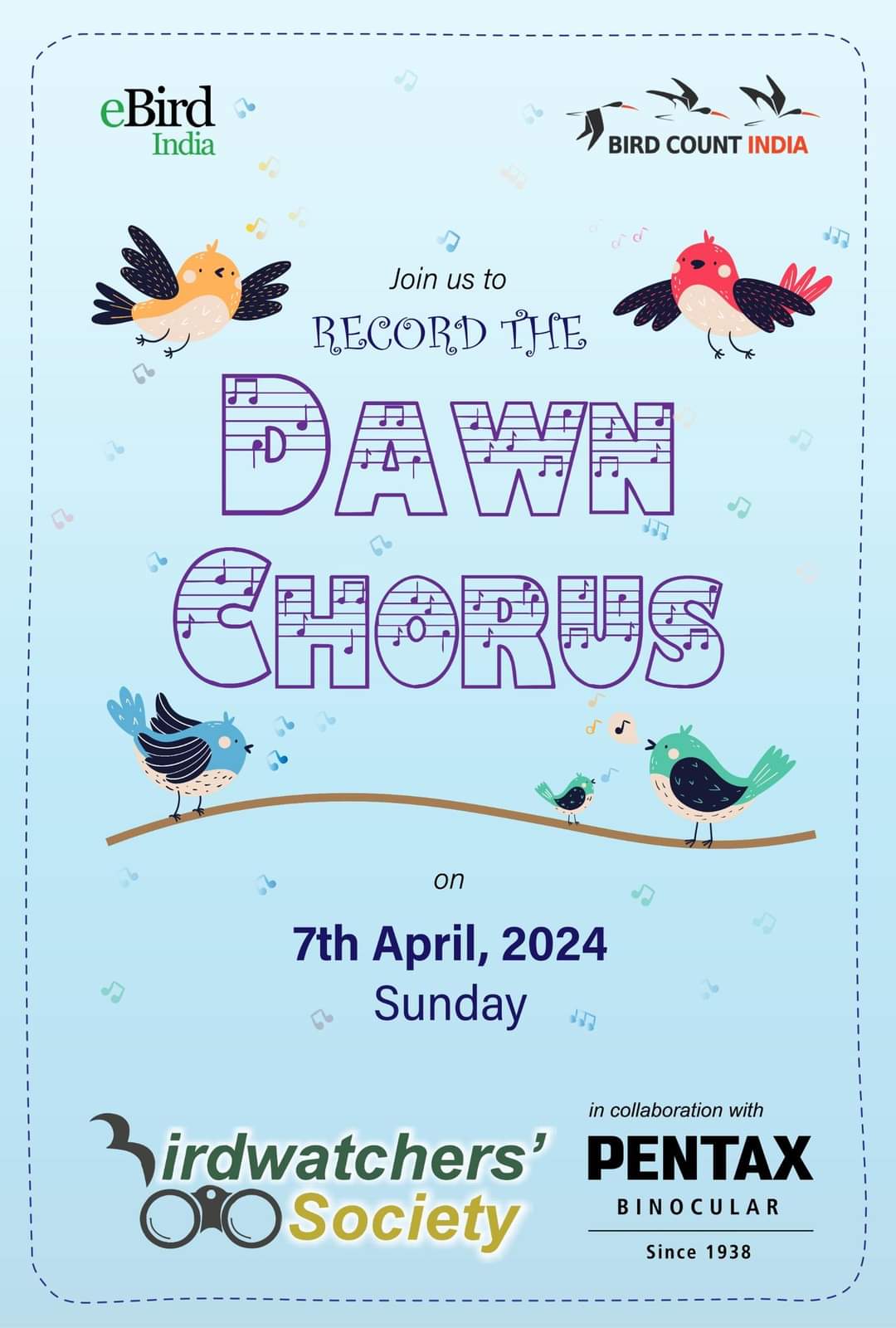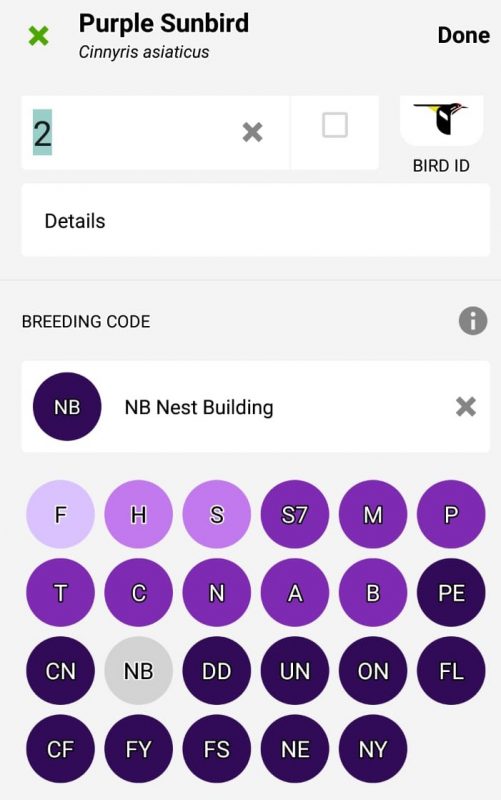
- This event has passed.
Dawn Chorus Day 2024
7 Apr 2024

The results of the Dawn Chorus Day 2024 can be seen in July-September 2024 issue of ‘Fantail‘– an online quarterly newsletter by Birdwatchers’ Society!
Dawn Chorus Day is a celebration of birdsong! The collective sounds of birds in the morning are referred to as the “dawn chorus.” The dawn chorus of birds is not restricted to any particular season, as it can occur throughout the year. However, it is most notable during the breeding season in spring and early summer. In India and around the world, April often marks the onset of the breeding season. Melodious songs fill the air as birds sing to establish their breeding territories, attract mates and communicate with other birds.
Join us on Sunday, 7 April 2024 by participating in the Dawn Chorus Day. You can participate from anywhere in the country by recording bird vocalizations, processing them, and uploading them to your eBird checklists. You can choose to record songs from your rooftop and backyard, open landscapes and agricultural fields, wooded areas, or anywhere. We suggest that you identify the location in advance and do a practice run beforehand. A special webinar to showcase birdsong will be held from 07:00 am to 08:30 am on the day of the event. Watch this space for the live stream!
How to record and process bird vocalizations?
- Record sounds using either an external recording device or your in-built phone microphone
- On your phone, apps such a Merlin and Smart Recorder allow you to record audio in .WAV format
- Download your recordings in .WAV format from your phone to your PC, trim and normalize them using free software like Oceanaudio or Audacity so that they can be uploaded to the relevant species on the relevant eBird checklist
- Also share interesting recordings directly through email to birdwatcherssocietywb@gmail.com, along with your name, location and time of the recording
How to make eBird checklists for Dawn Chorus Day?
- Start your first checklist just before dawn (at first light) when birds begin to sing
- You can make one or more checklists until up to two hours after dawn
- Make checklists that are exactly 15 minutes long so that timing of the vocalization is precise
- All lists should be complete checklists with counts of all birds that you could identify by sound and/or sight to the best of your ability
- Share your checklists with the eBird ID “dcindia”
How will uploading these sound recordings help?
- Your sound recordings will be used to train Merlin Sound ID
- India has 239 species currently available for Sound ID but this number will grow as we record and upload more recordings!
- One day Merlin will be able to tell us all the species that are singing in our vicinity!
- Check out all recordings uploaded to eBird (via the Macaulay Library)!
You can read about the first Dawn Chorus Day celebration here.
If you are interested to be a part of Dawn Chorus Day, please follow this link to join our Dawn Chorus WhatsApp group.

Monitoring breeding (IMPORTANT)
Singing during the breeding season is a breeding behaviour! Do report Breeding Codes on eBird. This will help monitor breeding activity over time. More the number of checklists with breeding codes, better our understanding of the incidence of each breeding behaviour.
Whenever you see birds showing any signs of breeding, select the appropriate breeding behaviour code. To do this in the eBird App, tap the species name, tap on ‘Add breeding code‘, and select the appropriate purple circle that is closest to your observation (see the example below).
Please note, F (Flyover) and H (Appropriate Habitat) are not breeding codes. Avoid use of H completely. Note that every observation does not require a breeding code!

Watch this webinar to better understand how to use breeding codes.
For further queries, email: birdwatcherssocietywb@gmail.com. Hope you have a wonderful experience of bird song!
